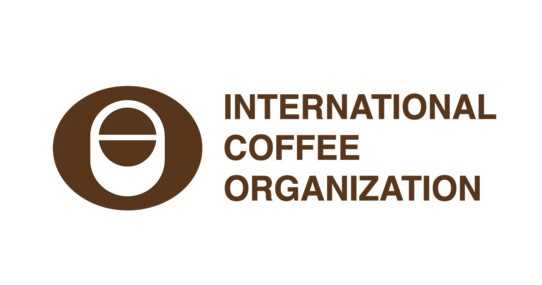LONDON, UK – In February 2021, the ICO composite indicator continued its upward trend, averaging 119.35 US cents/lb as prices for all group indicators rose reports the London-based organization in its new report. This is the highest monthly average since October 2017 when the ICO composite indicator reached 120.01 US cents/lb. Global exports in January 2021 totaled 10.21 million bags, compared with 10.59 million bags in January 2020, and shipments in the first four months of coffee year 2020/21 increased by 3.7% to 41.88 million bags.
Exports from the world’s largest coffee-producing region, South America, increased by 15.5% to 23.26 million bags as shipments from Brazil grew by 24.3% to 16.77 million bags.
However, exports from the other three regions declined in October 2020 to January 2021. Shipments from Asia & Oceania decreased by 3.9% to 12.19 million bags.
Africa’s exports decreased 13% to 3.81 million bags as shipments from three of the region’s five largest producers declined. Shipments from Central America & Mexico fell by 17.5% to 2.62 million bags as parts of the region were severely affected by hurricanes Iota and Eta.
The monthly average of the ICO composite indicator rose by 3.1% to 119.35 US cents/lb in February 2021, representing the fourth consecutive month of increase. The ICO daily composite indicator remained stable in the first half of the month, reaching a low of 115.07 US cents/lb on 15 February. However, in the final week of the month, prices rose sharply and reached a high of 128.34 US cents/lb on 25 February.
Prices in February were supported by tightening supplies, as well as expectations of a deficit in the next season due to high temperatures and low rainfall in Brazil. Commodities, by and large, have been rallying as markets continue to factor in vaccine-related optimism and recent container shortages.
Prices for all group indicators rose in February 2021. Prices for Robusta coffee experienced the largest increase, rising by 3.8% to 73.37 US cents/lb, which is the highest monthly average since July 2019. The average price for Colombian Milds rose by 2% to 176.96 US cents/lb, and the average price for Other Milds grew by 3.6% to 166.43 US cents/lb. As a result, the differential between Colombian Milds and Other Milds fell by 17.3% to 10.53 US cents/lb. The average price for Brazilian Naturals reached 120.06 US cents/lb, 2.9% higher than in January 2021.
The average arbitrage in February, as measured on the New York and London futures markets, decreased by 0.6% to 66.62 US cents/lb. Stocks of certified Arabica declined by 3.4% to 1.69 million bags in February 2021, after increasing in the previous four months. Certified Robusta stocks amounted to 2.41 million bags, 0.4% higher than in January 2021.
The volatility of the ICO composite indicator price decreased by 1.2 percentage points to 5.8% as the volatility for all indicators decreased, a further reduction from January 2021 when volatility was 7%. In February 2021, the volatility for Colombian Milds and Other Milds both fell by 1.2 percentage points to 5.5% and 5.9%, respectively. The volatility for Brazilian Naturals decreased by 1.3 percentage points to 8% while the volatility for Robusta prices was 6.4%, 1.3 percentage points lower than in January 2021.
In coffee year 2020/21, global production is estimated by the ICO to rise by 1.9% to 171.9 million bags with Arabica production growing by 5.2% to 101.88 million bags. World coffee consumption is projected to increase by 1.3% to 166.63 million bags in 2020/21 as social distancing measures remain in place, limiting out-of-home consumption, and the global economy recovers at a slow pace. Coffee year 2020/21 is projected to end with a surplus of 5.27 million bags as growth in supply outpaces demand.
Global exports in January 2021 totalled 10.21 million bags, compared with 10.59 million bags in January 2020. Exports in the first four months of coffee year 2020/21 increased by 3.7% to 41.88 million bags compared to 40.38 million bags during the same period in 2019/20. In October 2020 to January 2021, shipments of Other Milds decreased by 11.9% to 5.84 million bags, Colombian Milds by 3.4% to 5.1 million bags, and Robusta by 2.6% to 14.88 million bags. However, exports of Brazilian Naturals grew by 21.8% to 16.06 million bags during this period.
Exports from Africa in the first four months of coffee year 2020/21 decreased by 13% to 3.81 million bags as shipments from three of the region’s five largest producers declined. Uganda was the largest regional exporter, shipping 1.73 million bags, an increase of 6.8% on the first four months of coffee year 2019/20, as an increase of green Robusta shipments offset reduced exports of Arabica coffee, which is in the off-year of its biennial cycle.
In contrast, shipments from Ethiopia fell by 31.6% to 798,000 bags, from Côte d’Ivoire by 56.2% to 245,000 bags and from Kenya by 13.1% to 185,000 bags, due in part to the lower prices in the past few years. However, Tanzania’s exports increased by 16.5% to 458,000 bags due to improved export procedures.
Asia & Oceania’s coffee exports declined by 3.9% to 12.19 million bags in October 2020 to January 2021. Viet Nam’s exports during this period declined by 10.4% to 7.88 million bags, due to delays in the current crop’s harvest and competition from other Robusta producers.
However, Indonesia’s shipments increased by 24.2% to 2.47 million bags, as a 39.7% increase in its shipments of green Robusta offset losses in green Arabica. Additionally, its exports of soluble coffee rose by 13.8% to 623,000 bags during the first four months of the coffee year. Exports from India, the region’s third largest producer, decreased by 7.1% to 1.31 million bags. Much of this decline was due to a decrease of 13.9%, to 591,000 bags, in its shipments of processed coffee.
Compared to the first four months of coffee year 2019/20, exports from Mexico & Central America fell by 17.5% to 2.62 million bags as parts of the region were severely affected by hurricanes Iota and Eta. Notably, shipments from Honduras, the region’s largest producer, decreased by 40% to 744,000 bags while those from Nicaragua fell by 20.2% to 450,000 bags.
Guatemala’s exports declined by 15.7% to 461,000 bags. In contrast, Mexico’s exports between October 2020 and January 2021 increased by 22.8% to 798,000 bags, partially in response to the greater availability of coffee compared to other countries in the region. While Mexico’s shipments of processed coffee remained stable at 347,000 bags, its exports of green Arabica coffee grew by 61.5% to 415,000 bags.
In October 2020 to January 2021, South America’s exports increased by 15.5% to 23.26 million bags. During this period, shipments from Brazil rose by 24.3% to 16.77 million bags. Brazil is nearing the end of its 2020/21 crop year, which was an on-year for its Arabica production.
Brazil’s exports of green Arabica increased by 26.9% to 14.03 million bags, and its green Robusta shipments grew by 26.1% to 1.43 million bags. Exports from Colombia fell by 2.9% to 4.69 million bags while its output, as estimated by the National Federation of Coffee Growers of Colombia, has decreased by 3.2% to around 5.43 million bags during the first four months of coffee year 2020/21. Although its shipments of green Arabica coffee decreased by 3.2% to 4.35 million bags, its exports of processed coffee rose by 1.1% to 332,000 bags.










